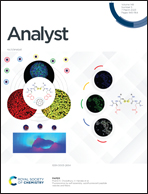MIP integrated surface plasmon resonance in vitro detection of sodium benzoate
Abstract
Food safety is a major concern, with several new diseases arising from unhealthy foods and their composition. Our lifestyle leads us to use ready-to-eat and ready-to-cook foods. The use of preservatives is necessary to make these foods long-lasting. Sodium Benzoate (SB) is one of the most used preservatives in foodstuffs due to its antifungal and antibacterial properties and it also works as a microbial agent. SB keeps foodstuffs fresh and prevents mould and spoilage. The permissible limit of SB is 0–5 mg per kg of body weight per day, which is generally recognized to be safe, as a high intake of SB may increase your risk of inflammation, oxidative stress, obesity, allergies, and disrupting hormones. Therefore, one needs to design a rapid, sensitive, and selective sensor for SB detection. Thus, in this work, we report a Kretschmann-based surface plasmon resonance (SPR) sensor for the detection of SB using the molecularly imprinted polymer (MIP) method over silver-coated SF-11 glass. The wavelength interrogation method was used for the characterization of the Ag/MIP probe. The SPR spectra were blue-shifted with increasing concentrations of SB. The detection range of the sensor is found to be from 0–40 μg ml−1 and the sensor gets saturated beyond these concentrations. The proposed sensor has high sensitivity and a high figure of merit (FOM) at low concentrations, with these parameters decreasing with increasing SB concentration. The sensor is highly selective for SB as it does not respond to the other chemical compounds we tested, – atrazine, melamine and chitosan. The limit of detection of the sensor is found to be 0.083 μg ml−1, which is very low compared to other reported methods for SB sensing. The FOM is recorded as 0.026 (μg ml−1)−1 for 4 μg ml−1 concentration. This sensor works within the permissible limit and beyond for SB. This sensor can be utilized for the detection of traces of SB in packed food/juice, pickles, drinks, wines, sauces, and ready-to-cook foodstuffs, and also in personal care products: serums, toothpaste etc. This sensor is cost-effective, highly selective, reliable, easy to handle and has the advantage of online monitoring.



 Please wait while we load your content...
Please wait while we load your content...